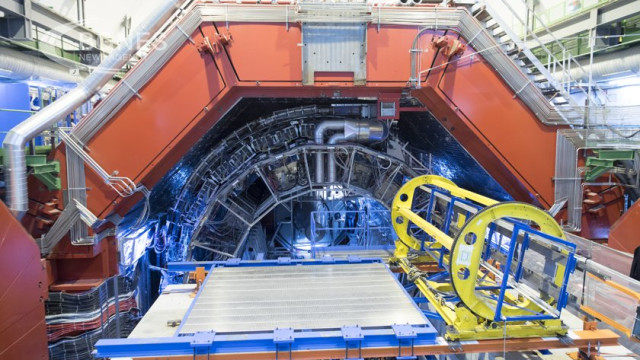Researchers at the world's largest particle accelerator in Switzerland have presented proposals for a new, much larger supercollider.
The goal is to discover new particles that will revolutionize physics and lead to a more complete understanding of how the universe works.
If approved, it will be three times the size of the current giant machine.
But its £17bn price tag has raised some questions, with one critic describing the spending as "reckless".
These funds, which represent only the initial construction costs, will be provided by the member countries of the European Organization for Nuclear Research (CERN), including the United Kingdom, and some experts question the economic feasibility of the project.
The Large Hadron Collider's (LHC) crowning achievement was the discovery of a new particle called the Higgs boson in 2012. But since then, its ambition to discover the two holy grails of physics - dark matter and dark energy - has proved elusive, and some researchers believe, that there are cheaper options.
The new machine is called the Future Circular Collider (FCC). Cern's director general, Prof Fabiola Gianotti, told the BBC that if approved it would be a "wonderful machine".
"This is a tool that will allow humanity to take huge steps forward in answering fundamental physics questions related to our knowledge of the universe. And to do that, we need a more powerful tool to answer those questions ", she said.
Cern is located on the border between Switzerland and France, near Geneva.
The LHC consists of an underground circular tunnel with a circumference of 27 km. It accelerates the insides of atoms (hadrons) both clockwise and counterclockwise to speeds close to the speed of light, and at certain times smashes them harder than any other atom smasher can do in the world.
The smaller subatomic particles left over from the collisions help scientists understand what atoms are made of and how they interact with each other.
The existence of a building block that gives shape to all other particles in the universe was predicted in 1964 by the Scottish physicist Peter Higgs but was only discovered at the LHC in 2012. It is the final piece of the puzzle of the current theory of subatomic physics. called the Standard Model.
The proposal is to build the larger accelerator in two stages. The first will become operational in the mid-1940s and will collide electrons together. It is hoped that the increased energy will lead to the formation of a large number of Higgs particles that scientists will be able to study in detail.
The second stage will begin in 2070 and will require more powerful magnets, so advanced that they have not yet been invented. Instead of electrons, the search for completely new particles will use heavier protons.
The FCC will be almost three times the circumference of the LHC, a whopping 91 km long and twice as deep. It must be deeper so that the stronger radiation created by the higher energies does not reach the surface./BGNES







